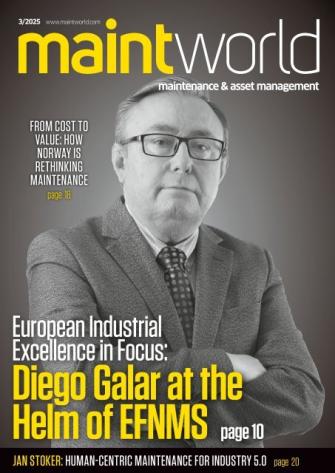The Role of Simplified Technical English in Aviation Maintenance
The role Simplified Technical English, STE, plays in aviation maintenance has been investigated and discussed in this article. A brief history of the development of the ASDSTE100 Specification [1] within the aviation industry, together with its range of application, an overview of its principles, structure and rules are presented. The primary objective of STE is the removal of linguistic barriers in a continuous attempt for the correct understanding of the instructions by the operators, the improvement of flight safety and reliability.
Since the first man-made flight in 1903, achieved by a machine made by “bicycle experts”, flying machines have become significantly complicated. Consequently, achieving the required level of inservice reliability and functionability has become increasingly more and more difficult. The advanced scientific and technological developments built into flying machines has had to be communicated to thousands and thousands of operational, maintenance and support personnel all over the world, who deliver in-service reliability and functionability of aircraft on a daily basis.
The designers of flying machines communicate with operators and maintainers through technical documentations. Operational and maintenance manuals are generated by manufactures that understand very well the science and technology embedded in their machines. However, operators and maintainers, who are neither scientists nor engineers, have to understand information that the design community is trying to communicate to them. This process was less challenging in the time of the Wright brothers when the associated documentation consisted of several pages, but the corresponding technical documentation in the current, web-oriented “Interactive Electronic Technical Publications (IETP)” represents a real challenge. [2]
The international language of the aviation industry, and all technical documentation is English, but for 80 % of operational, maintenance and support personnel in the aviation industry English is not the native language. Consequently, the problem arises daily when in-service personnel, the majority of whom have a limited knowledge of the English language, are trained to make use of the relevant technical documentation and there are endless opportunities for misinterpretation. Like other living languages used around the world, many English words, phrases, and expressions have several meanings, which can be very confusing and potentially dangerous.
For example, for the English word “lift” there are 13 different meanings if it is used as a verb and 8 different meanings if it is used as a noun and there are many words in the same category.
The Need for Improving Technical Communication
The following sentence has been found in one of the existing maintenance manuals: “Round the edges of the round cap. If it then turns round and round, as it circles round the casing, another round of tests is required.” This example shows that the word “round” is used with different meanings and roles (as a verb, as a noun, as an adjective) and clearly illustrates the need for significant improvement of the accuracy of the communication in aviation maintenance.
However, it is necessary to stress that the above example does not mean that the previous maintenance texts were not technically or linguistically correct, but accurate text and correct presentation are not always sufficient. The selection of the English words was (and is) not easy and some users still make mistakes with texts that authors think are written in good English.
The aviation industry is not the only one experiencing problems with technical communication. The first attempt to create a Controlled Language was made by Professor Charles Ogden who created the Basic English [3] in 1930s. In the 1970’s the American Company Caterpillar created the Caterpillar Fundamental English, CFE [4] to improve technical communication with their customers and consequently improve the reliability of their products.
Similar attempts for the creation of Controlled Languages could be found also in other industries, but none of them became the world standard until the early 1980s when AECMA (The European Association of Aerospace Industries) developed the AECMA Simplified English to help users of the English-language maintenance documentation understand what they read.
It was initially applicable to commercial aviation, but became also a requirement for defense projects including land and sea vehicles.
The Development of STE
In 1979, the Association of European Airlines (AEA) thought that a simplified language applicable to the aircraft maintenance documentation was necessary. The new Controlled Language, a Simplified form of English, should satisfy the following requirements: a small number of words, words with defined meanings, words with defined parts of speech and a simplified structure.
AECMA accepted the task of finding the solution, and for this purpose it formed the Simplified English Working Group (SEWG). After the initial analysis of many maintenance texts, the SEWG defined a set of writing rules, a controlled dictionary and examples. Also, the Aerospace Industries Association (AIA) of America sent their representative in the SEWG.
The result of such extensive work was the AECMA Simplified English (SE) Guide which was first released in 1986 and soon became a mandatory language requirement of the e major specifications for writing maintenance manuals, ATA 100 (now ATA iSpec 2200) [5], and AECMA 1000D (now S1000D) [6].
STE was therefore created to produce documentation that must be:
- Accurate = conforming to a standard with total accuracy
- Complete = having all necessary information
- Relevant = having connection with the subject
- Concise = express much in few words
- Convincing = causing to believe the truth
- Meaningful = having a meaning for the purpose
- Unambiguous = causing no doubts and leading to only one conclusion.
In 2005, AECMA became ASD, “The AeroSpace and Defence Industries Association of Europe” and the Simplified English Guide became an official Specification, ASD-STE100 (STE), with the word “technical” added to its name. The European Community, in 2006, trademarked STE.
Today STE is maintained by a dedicated group of 14 members, the ASD Simplified Technical English Maintenance Group (STEMG), consisting of representatives from ASD member countries and non-ASD member- countries and in addition, there are associate members representing the customers (Airlines and Military Organizations).
Although the STE structure is stable and consolidated, the language has to be kept in line with the technology evolution and amended on the basis of the continuous and important feedback received from the users. On 15th January 2013, the STEMG released Issue 6 of the specification, which represents a further step of continuous improvement.
Principles and Structure of STE
The STE Specification has the following two parts:
- A set of writing rules
- A controlled vocabulary
The writing rules (approximately 60) cover aspects of grammar and style, they regulate the use of words, layout and sentence length. The STE writing rules are neither meant to replace the English Grammar nor to diminish it. STE is for the benefit of the readers that should receive a text in simple and correct English without the necessity of knowing STE. However, writing in STE correctly is not an easy task, it requires a good command of the language and a high level of professionalism from the author’s side.
The dictionary (approximately 860 approved keywords) specifies the general words that can be used, chosen for their simplicity and ease of recognition. In general, there is only “one word for one meaning”, and “one part of speech for one word”. In addition to the specified general vocabulary, STE accepts the use of company-specific or project- oriented words (identified as Technical Names and Technical Verbs) providing that they obey their STE specific rules and fit into one of the specific categories listed in the STE specification.
STE as an Important Resource for Aviation Safety and Reliability
While new technologies in aviation are introduced to increase the reliability of systems, human errors during their operation and maintenance can become the primary cause of safety and reliability reduction events. In aviation, the concepts of “Human Factors” are directly connected to maintenance. During maintenance, a maintainer can do an incorrect task that can cause a malfunction of components and systems, which can have important effects on flight safety and aircraft reliability. The language used in the maintenance documentation and procedures is important for the correct execution of maintenance tasks, it is especially important when the maintainers are relying on procedures not written in their native language and they do not have a high knowledge of English.
A maintainer can do an incorrect task that can cause a malfunction of components and systems, which can have important effects on flight safety and aircraft reliability.
Applications of STE in Mirce Mechanics
Quality of maintenance process is quantifiable in statistical terms related to the occurrences of maintenance faults and errors. However, as statistics do not study the causes of statistical behaviour, full understanding of the quality of maintenance is only possible by understanding physical causes and mechanisms that lead to the occurrence of maintenance faults during the maintenance process. Based on the analysis of tens of thousands of maintenance tasks in defence, aerospace, nuclear, transportation, Formula 1 Grand Prix racing, chemical, and other industries, Dr. Jezdimir Knezevic has formulated the second Axiom of Mirce Mechanics, which states that “The probability of faulty execution of any maintenance task is greater than zero.” [7]
As on one hand this axiom has a profound impact on all aspects of the life on any maintainable system, such as: reliability, availability, safety, cost, effectiveness and many others, and on the other on associated processes like: manufacturing, operation and logistics support, a continuous effort is made in the application of the Simplified Technical English to the principles and methods of the Mirce Mechanics.
The main objective of this research project is the reduction of human errors in operation, maintenance and support processes through the creation of an STE-based structure for technical communication between design-in community and in-service community, which will consequently improve the safety and reliability of flying machines and flights.
»»References ›› [1] Aerospace and Defence Industries Associations of Europe (2013), ASD Simplified Technical English, Specification ASD-STE100. ›› [2] Chiarello, O., Impact of Accuracy of Technical Communication on the Motion of Functionability, Proceedings of the 1st World Congress of Mirce Mechanics, 28-30 May 2012, Exeter, UK . ›› [3] Ogden, C. K. (1930), BASIC English – A general introduction with rules and grammar, London, Kegan Paul, Trench, Trubner & Co. Ltd. ›› [4] Verbeke C. A. (1973), “Caterpillar Fundamental English”, in Training and Development Journal, 27, 2, 36-40. ›› [5] Air Transport Association of America (2011), ATA iSpec 2200, Information Standards for Aviation Maintenance. ›› [6] Aerospace and Defence Industries Associations of Europe (2009), S1000D – International specification for technical publications utilizing a common source database. ›› [7] Knezevic, J., Quality of Maintenance – Mirce Mechanics axiom. Journal of Quality in Maintenance Engineering, Vol. 18, No 2, 2012, pp 216-226, Emerald Group Publishing Ltd. UK .










![EMR_AMS-Asset-Monitor-banner_300x600_MW[62]OCT EMR_AMS-Asset-Monitor-banner_300x600_MW[62]OCT](/var/ezwebin_site/storage/images/media/images/emr_ams-asset-monitor-banner_300x600_mw-62-oct/79406-1-eng-GB/EMR_AMS-Asset-Monitor-banner_300x600_MW-62-OCT.png)



